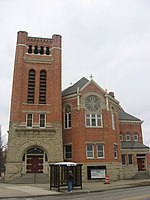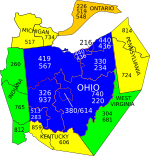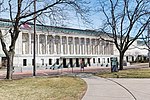Mercy College of Ohio
1917 establishments in OhioBuildings and structures in Toledo, OhioCatholic universities and colleges in OhioEducation in Toledo, OhioEducational institutions established in 1917 ... and 4 more
Midwestern United States university stubsOhio school stubsRoman Catholic Diocese of ToledoSisters of Mercy colleges and universities

Mercy College of Ohio is a private Roman Catholic nursing school in Toledo and Youngstown, Ohio. It was founded as the Mercy School of Nursing in 1918 by the Sisters of Mercy. The name was changed in August 2011 from Mercy College of Northwest Ohio to its current name. Mercy College is accredited by the Higher Learning Commission.In September 2018, Mercy College and Bowling Green State University announced the start of a two-to-three-year process under which the college and its degree programs will become part of the university. In 2019 they instead chose to pursue a strategic partnership.
Excerpt from the Wikipedia article Mercy College of Ohio (License: CC BY-SA 3.0, Authors, Images).Mercy College of Ohio
23rd Street, Toledo
Geographical coordinates (GPS) Address Website External links Nearby Places Show on map
Geographical coordinates (GPS)
| Latitude | Longitude |
|---|---|
| N 41.6588 ° | E -83.5523 ° |
Address
Mercy College
23rd Street
43624 Toledo
Ohio, United States
Open on Google Maps









